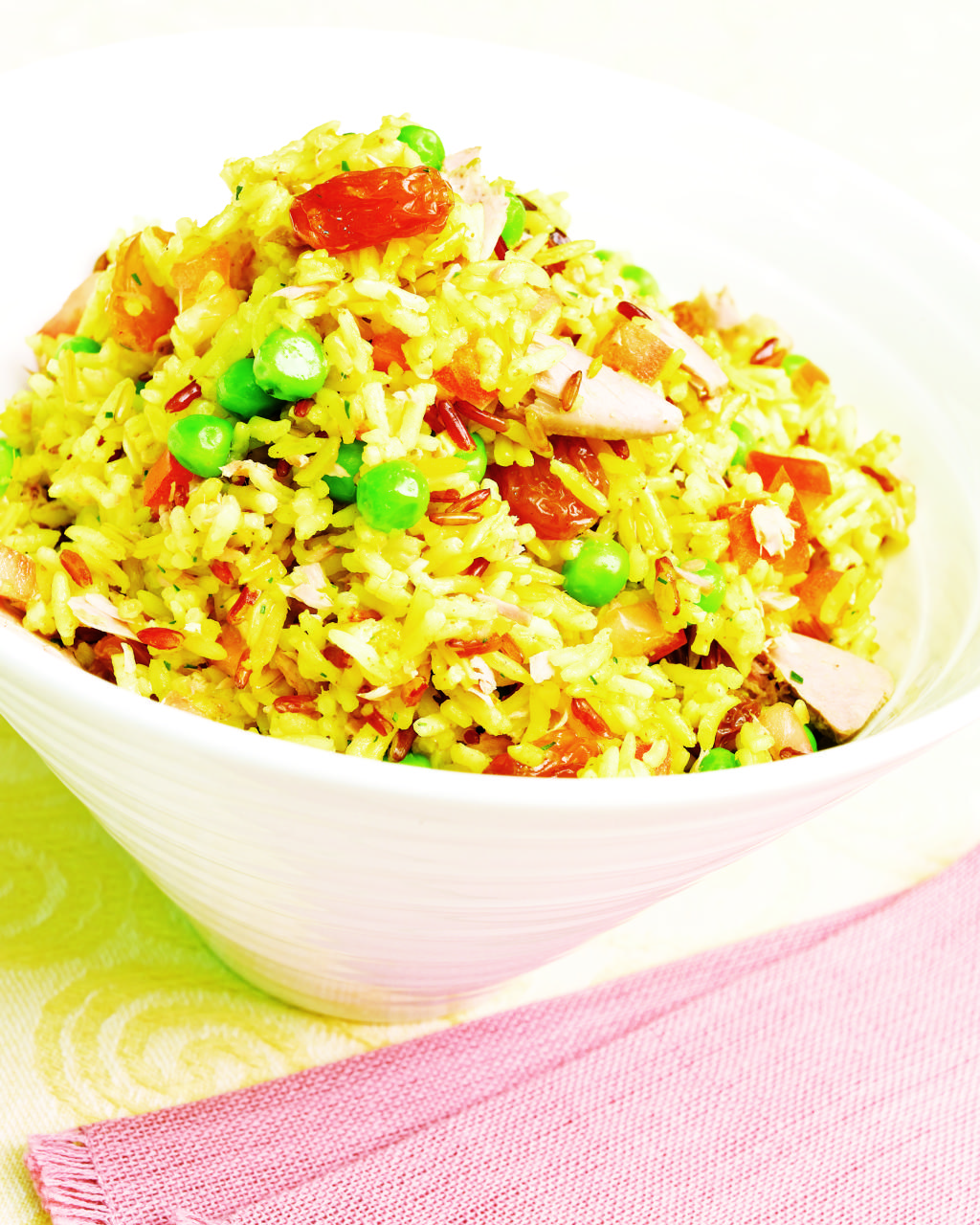How to reduce risk of diabetes
Crucial lifestyle changes can prevent or delay the onset of type 2 diabetes
Sign up now: Get ST's newsletters delivered to your inbox

Nasi Kuning.
PHOTO: HEALTH PROMOTION BOARD
Follow topic:
Pre-diabetes, where one's blood sugar level is higher than normal but not yet high enough to be classified as type 2 diabetes, could become the dreaded condition in eight years or less without intervention. And that is not all.
Those who are pre-diabetic are also at greater risk of developing heart disease or stroke.
The good news is that the onset of type 2 diabetes can be prevented or at least delayed with lifestyle intervention.
The Health Promotion Board has lifestyle intervention tips on how to reduce, by half, the risk of developing type 2 diabetes.
-
NASI KUNING
Having healthy meals does not mean cutting out all the joy of eating. This flavourful recipe is beneficial for those with diabetes as it uses brown rice which slows the spike in blood glucose level. It is taken from the seniors' nutrition toolkit launched in May by the Health Promotion Board, which includes a nutrition guide and recipe book.
Prep time: 10min
Cook time: 20min
INGREDIENTS
½ cup (100g) uncooked white rice
½ cup (100g) uncooked brown rice
½ tbsp oil
1 tsp turmeric powder
1 tsp coriander powder
2 cloves garlic
1 tsp peppercorn
1 pandan leaf
¼ cup low-fat evaporated milk
Salt to taste
2 cups (500ml) water
200g canned tuna flakes in water
1 tomato, diced
50g green peas
1 tbsp raisins (optional)
1 tbsp almond flakes (optional)
3 lime leaves, finely chopped
2 tbsp lemongrass, chopped
METHOD
• Wash the rice and drain.
• Heat the oil in a non-stick wok.
• Stir-fry rice, turmeric, coriander, garlic, lemongrass and lime leaves.
• Transfer to a rice cooker. Add the peppercorns, pandan leaf, salt, low-fat evaporated milk and water. Then bring to a boil.
• Stir to mix. Cover the rice cooker and let it simmer until cooked.
• Fold in the tuna, diced tomatoes and green peas while the rice is hot.
• Garnish with raisins, almond flakes, lime leaves and lemongrass. Serve hot.
SERVES 2
HEALTHIER EATING TIPS
Reducing the amount of salt consumed can help manage high blood pressure. Use herbs, spices and nuts to give exciting flavours and texture to your food.
EAT HEALTHY
Local diets contain largely refined carbohydrate foods such as white rice, white bread and noodles, which have been linked to an increased risk of type 2 diabetes.
Cut down on refined carbohydrates and opt for wholegrains which are rich in fibre, vitamins, minerals and phytochemicals (beneficial plant substances).
They have a low glycemic index to slow the spike in blood glucose level and keep you feeling full longer to minimise snacking and weight gain.
Also cut down on sugar, especially in sweetened drinks, another significant source of empty calories, which will lead to weight gain and high blood sugar levels.
EXERCISE MORE
About four in 10 of the people here aged 18 to 69 years do not exercise enough, according to the National Health Survey 2010.
Moderate-intensity exercise of 150 minutes per week is recommended.
There is a positive relationship between physical activity and prevention of type 2 diabetes.
Accumulating the recommended amount of physical activity per week can reduce high blood pressure and lower blood choles- terol levels.
A study has shown that it reduces the risk of type 2 diabetes by up to 58 per cent - especially among those at high risk of developing the disease, such as those with a family history of diabetes or who are overweight with a body mass index of 23 and above.
It also helps to reduce the risk of cardiovascular diseases and colon and breast cancers.
For an inactive adult who takes 3,000 to 5,000 steps a day, walking the recommended 7,500 to 10,000 steps daily has been shown to reduce high blood pressure, help with glucose control for those with type 2 diabetes, lower blood cholesterol levels and lead to a 19 per cent reduction in the risk of death from any cause.
LOSE WEIGHT
Start with a modest weight loss of 5 to 10 per cent of body weight. According to the National Nutrition Survey 2010, Singaporeans are, on average, consuming about 2,600 calories daily, exceeding the recommended intake of calories by an average of 300 calories.
Maintaining caloric balance with regular physical activity and appropriate calorie intake can prevent weight gain or achieve weight loss.
STOP SMOKING
Smoking worsens the narrowing of blood vessels, reducing blood flow to many organs which can lead to serious complications.
CUT DOWN ON ALCOHOL
Drinking alcohol interferes with meal plan and blood glucose control.
REGULAR HEALTH SCREENING
Those at risk, with a family history of diabetes or who are overweight (body mass index of 23 and above), should go for screening before they are 40 years old.
If their screening results are normal, it should then be done once every three years.
Regular health screening for diabetes is recommended once every three years from the age of 40 for those who are not at risk.
If you are diabetic, you can have good control over blood sugar levels with:
•Regular check-ups: Those who are diagnosed with diabetes should see their family doctors regularly and follow their prescribed management plan. Appropriate management of the condition can result in well-controlled diabetes and improved health outcomes.
•Healthy diet: Keep it similar to that of those who are pre-diabetic.
•Regular exercise: Physical activity among those with type 2 diabetes is associated with a lowered risk of heart disease and death, possibly through the positive effect of lowering blood pressure and total cholesterol.
•Walking: It is a recommended form of exercise for those with type 2 diabetes, especially those who have not been active.
•Not smoking
•Cutting down on alcohol: Especially for those taking insulin or medicine for diabetes.
Ng Wan Ching

